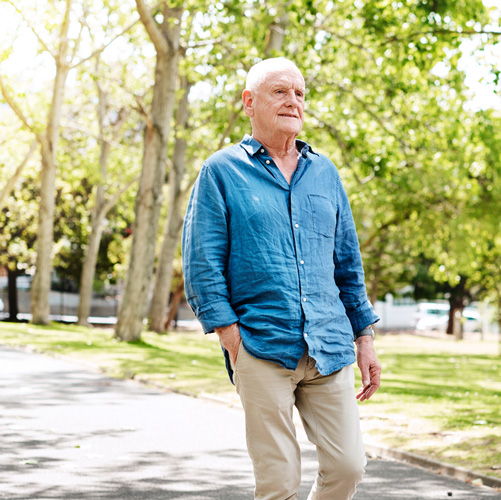Non-Surgical Options
Once you have been diagnosed with LSS, there are many non-surgical treatments that medical professionals may recommend. These include:
Rest/Restricted Activity
Weight loss
Medication (non-steroidal anti-inflammatory drugs)
Chiropractic Care
Massage Therapy
Acupuncture
Physical Therapy
Exercise
Injections
NSAIDS (i.e. Motrin, Advil, or Aleve)
If after 6 months of using these treatments you still feel pain and experience other symptoms, it may be time to talk with your provider about surgery.
Surgical Options
Once you have tried other methods with no success, spine surgery may be the next option. Selection of a surgical treatment is generally based on the extent of your spinal stenosis and the extent of the decompression needed to relieve your symptoms.

Decompression alone
- Decompression and Interlaminar Stabilization® with the Coflex® device
Direct decompression with pedicle screw fusion
“I tried a lot of physical therapy. I tried the chiropractic treatment. I tried epidural shots. I tried a lot of things, none of it really helped for very long.”
-Ed
Direct Decompression Alone
The most common surgical treatment is direct decompression on its own. It removes diseased or inflamed tissue that may affect the spinal nerves.

The procedure:
Involves a laminectomy or laminotomy is performed to access and address the stenosing structures
Requires no device to be implanted
Can be done as a minimally invasive procedure
Can be effective at relieving leg pain
Decompression alone does not address back pain, and can sometimes destabilize the spine as a result of the spine surgeon’s need to fully address the causes of the pressure on your spinal nerve.
Direct Decompression and Interlaminar Stabilization with the Coflex® Device
The Coflex® device is an alternative to fusion for a subset of lumbar spinal stenosis patients. The Coflex® device is placed in the back of the spine to keep it stable and help ease the pain caused by moderate to severe spinal stenosis.

Once direct decompression surgery is completed, the motion-preserving Coflex® implant is placed on the lamina (the strongest posterior bone in the body) to help with stability
- The Coflex® implant maintains the height between the bones in your spine to help the nerves move freely
Leg pain and back pain are relieved
Motion is maintained in your lumbar region
For patients who qualify, surgery to implant the Coflex® device can be performed in an outpatient setting. This can contribute to better outcomes, lower infection rates, and medical care cost savings. The Coflex® device is not for everyone; you must have tried non-surgical methods for at least 6 months before you decide on surgery. To see a visual of where the Coflex® device is implanted along with more information, click here.
Direct Decompression with Pedicle Screw Fusion
Spinal fusion is the most intense of the surgical treatments to address lumbar spinal stenosis. Fusion is for patients with spinal instability or other traumatic conditions. It requires a significant amount of bone and/or tissue removal, and to address the instability, the spine surgeon fuses two vertebrae together.

The procedure consists of placing implants within the spine such as screws, and rods. Bone graft is placed to create biological fusion and permanently fix the spine in place.
Because your bones are fused together, you have less overall mobility and flexibility.
An invasive surgery with longer healing time
Decompression alone does not address back pain, and can sometimes destabilize the spine as a result of the spine surgeon’s need to fully address the causes of the pressure on your spinal nerve.

